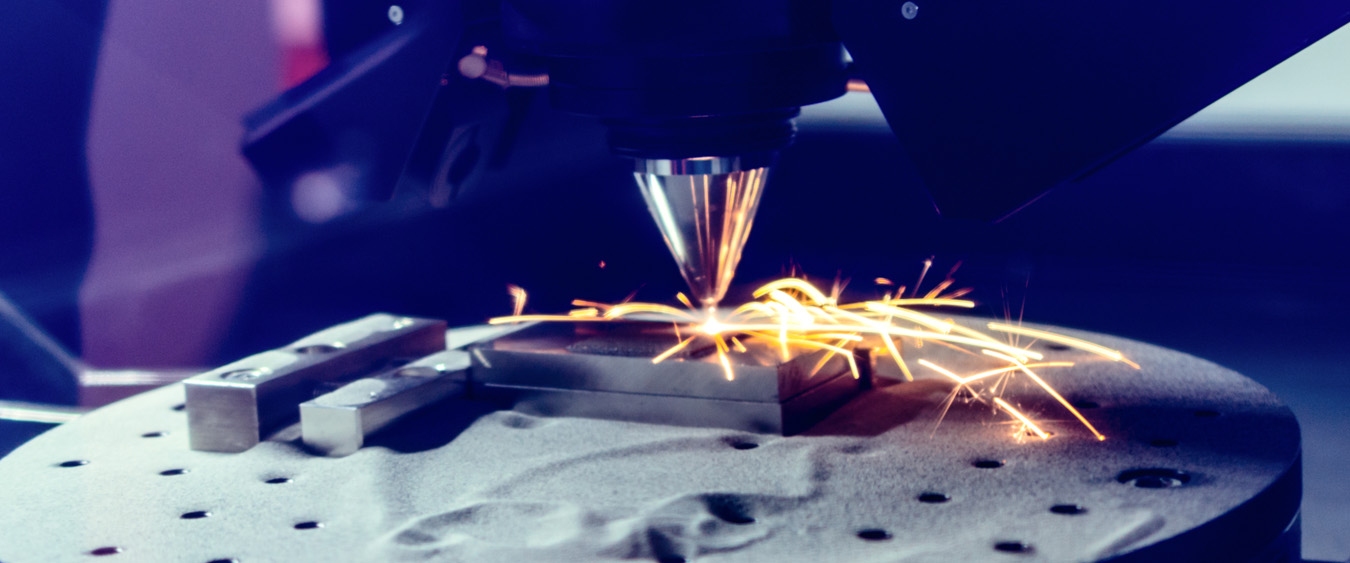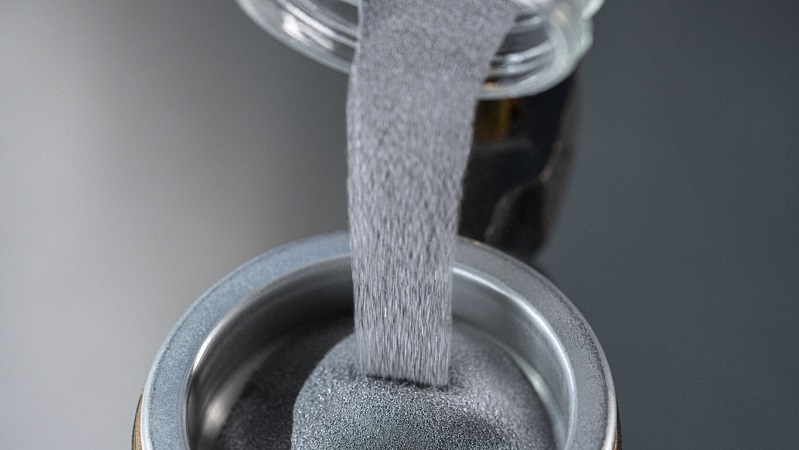What is Direct Energy Deposition (DED)?
Directed Energy Deposition (DED) is a general term that groups all the technologies involving manufacturing by semi-automated powder spraying and wire welding. When used on 3D shapes, DED is categorized as an additive manufacturing process with a surface roughness generally higher than Powder Bed Fusion due to the large bead sizes and coarser powder, thus requiring subsequent machining.
Generally, there are two types of DED systems, deposition only or hybrid systems which combine a DED head with a traditional machining system. Advantages of DED includes the speed of deposition which outclasses 3D printing by powder bed fusion and the ability to create functionally graded material structures (particularly with powder). Further, since the feedstock and energy source are tied together and moved in conjunction, DED systems are not limited by a “box” and can be used to manufacture very large structures. In certain applications, the overall cost to manufacture can be lower than either traditional manufacturing or in direct comparison with powder bed fusion.
Most DED systems are comprised of a deposition head fed by either wire or powder mounted on a robot or CNC system. Arc, Laser or Electron Beam energy sources are all used in DED systems but the most common energy source for use with powder feedstock is a laser. Offline programming is used to generate a tool path based upon a sliced CAD file. The motion system then executes this tool path depositing the selected material in a multi-layer fashion until the desired shape is constructed. DED is suitable to a wide range of weldable alloys systems including aluminum, steel, Nickel, and Titanium alloys. Depending upon the alloy selected and process, shielding gas can either be applied locally or throughout the enclosed environment.
Main areas of application
There are two major application spaces for DED technologies, either for repair or for manufacturing which includes both complete builds or modular builds where a new part is made by depositing local features on a simplified geometry. Repairs with DED have been in industrial use since at least the 1980s particularly in the Aerospace Industry and have seen further growth since the emergence of the additive manufacturing industry. Manufacturing parts completely by DED is not as common but this area has seen rapid growth in a short amount of time. Examples of manufacturing by DED are aircraft frames and structures, oil and gas components, defense vehicle structures, feeding screws and marine structures and propulsion.


